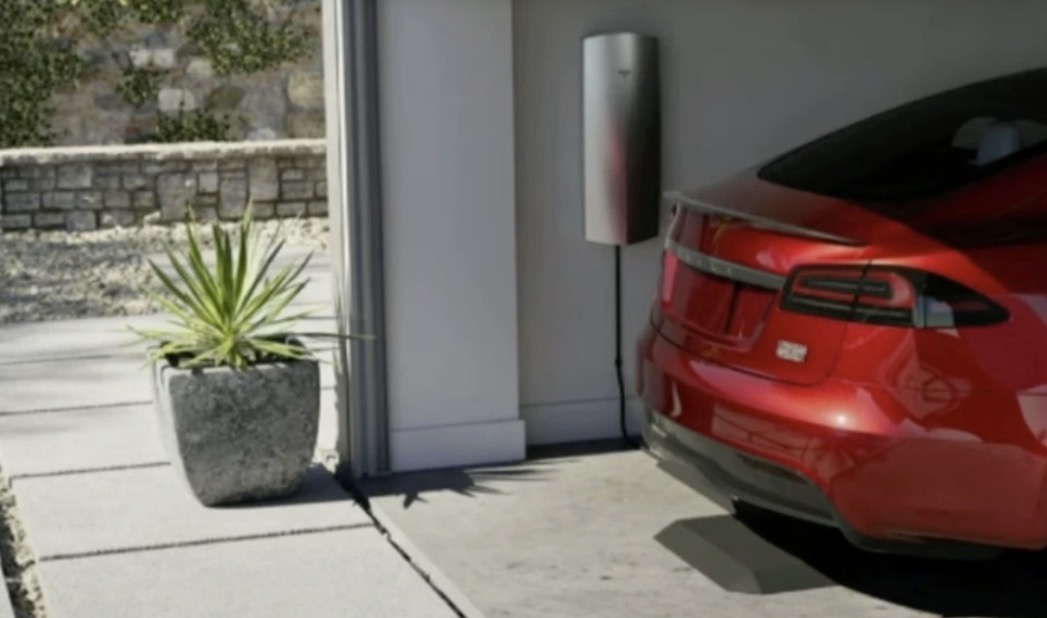
Tesla has confirmed it is working on a wireless inductive home charger for its electric cars after teasing it earlier this year.
Tesla has never shown any interest in wireless charging until earlier this year.
The problem wireless charging solves is not a major one. It alleviates the need to plug in your car, which is not a super difficult or time-consuming task. Nonetheless, Tesla has previously talked about automating the task in order to be ready for self-driving technology. If the cars could drive themselves, it would make sense for them to be able to charge themselves without a human needing to plug them in.
Over the years, Tesla has favored an automated robot arm instead of wireless charging to complete this task, but things have changed recently.
Earlier this year, Tesla teased a new wireless home charging station – pictured above. The automaker never commented on the situation other than releasing this picture as part of a presentation. However, it did briefly acquire a startup that focuses on wireless charging before selling it back – not before integrating some of its staff, though.
Now, Tesla has officially confirmed that it is working on a wireless home charging station.
In a Jay Leno video about the Cybertruck, Tesla chief designer Franz von Holzhausen confirmed that Tesla is working on the technology:
He didn’t release any more details about the upcoming product.
Here’s the full video with von Holzhausen:
Electrek’s Take
Personally, I’m not super excited about that product – mainly because I believe that it is going to be fairly expensive.
The installation cost is often the most expensive part of installing a home EV charger, and wireless charging technology is just going to make that even more expensive.
Top comment by Carmayogi
Liked by 6 people
I feel like this will be more useful in public charging rather than at home for ac cable management. Imagine this on a street parking spot rather than a maze of plugs/cables.
With a home wireless charging station, on top of the actual charger that you install on your wall that needs to be connected to your electrical panel, you need to install an inductive pad, which often needs to be embedded into the concrete.
On top of the installation at home, you need an inductive receiver on the vehicle, which also adds cost and weight.
It’s not going to be cheap, and consumers would be doing all that just to not have to spend the three seconds it takes to plug in.
Regardless of that, I’d still be glad for it to be an option for those who want it and can afford it.




